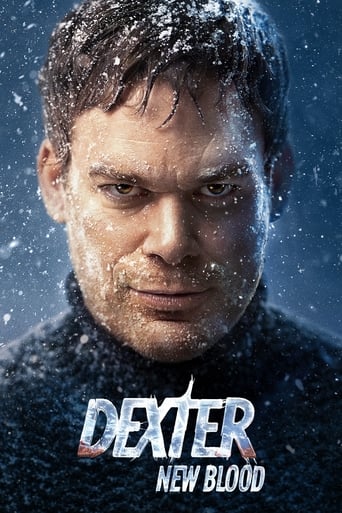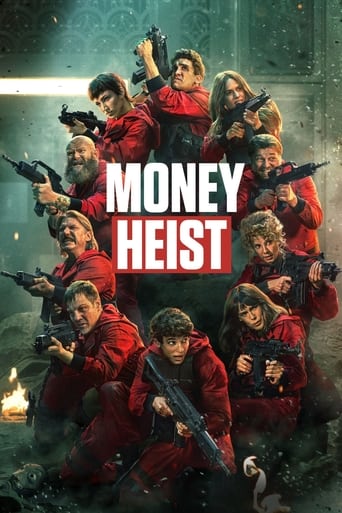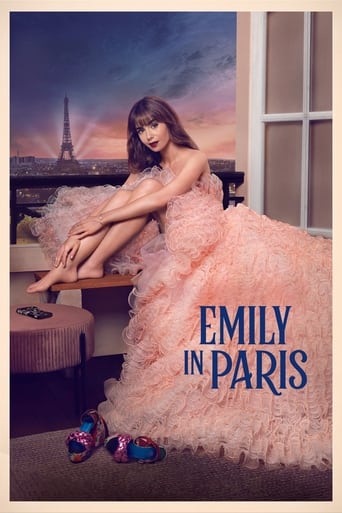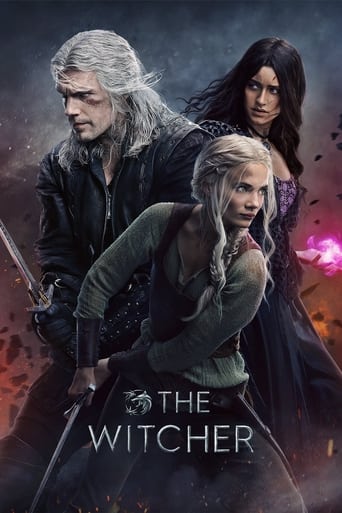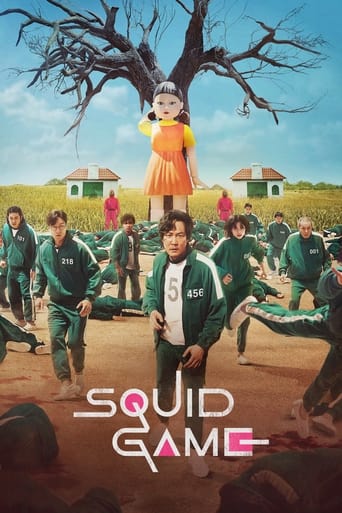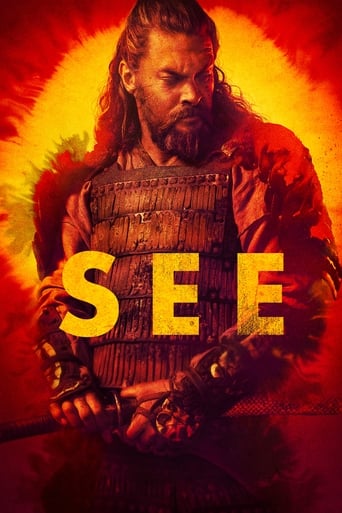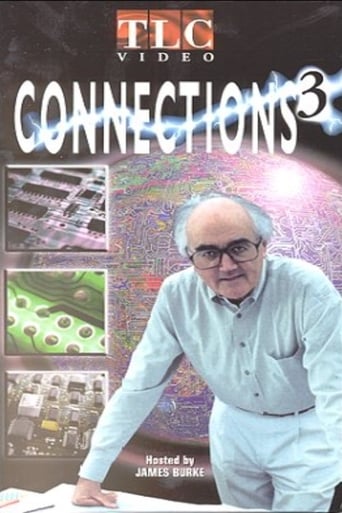
In the conclusion to his groundbreaking series, James Burke continues to make incredible connections to history's most important discoveries and inventions.
Seasons & Episode

Electronic agents on the internet and wartime guns use feedback techniques discovered in the first place by Claude Bernard, whose vivisection experiments kick off animal rights movements called humane societies that really start out as lifeboat crews rescuing people from all the shipwrecks happening because of all the extra ships out there that are using Matthew Maury's data on wind and currents transmitted by the radio telegraph, invented by Samuel Morse, who is also a painter whose hero is Washington Allston, who spends time in Italy with Samuel Taylor Coleridge, who comes to Malta and spies for the governor Alexander Ball, who saved Admiral Horatio Nelson's skin so he can go head over heels for Emma Hamilton in Naples, resulting in an illegitimate son. Emma became notable in the Electrico-Magnetico Celestial Bed, where you go regain your fertility through electricity, and you can get more whisky thanks to Joseph Black, who determined the latent heat of vaporisation in steam. James Watt borrowed that information to make a better steam engine. Watt is linked to Roebuck who discovered chlorine bleach which eventually is used to make white paper. The paper is used for decorating walls by William Morris, who is a socialist with Annie Besant, who is a vegetarian just like the Seventh-day Adventists. And we end up with W.K. Kellogg's cornflakes.

Remember the cornflakes from last episode? Because corncobs make adhesives to bond carborundum discovered by Edward Goodrich Acheson, otherwise known as silicon carbide, to grinding wheels used to grind lightbulbs, silicon carbide is also then used as protection against armour-piercing shells developed to hit tanks that start life as American tractors, which use diesel engines developed from funding from Krupp, who inspired Bismarck's welfare scheme based on Quetelet's statistics that inspired the Charles Babbage's difference engine, whose punch cards were used to rivet the SS Great Eastern, the monster ship that laid the transatlantic cable insulated with gutta-percha used to manufacture golf balls for factory managers in industrial Scotland, where James Watt had a run-in with Cavendish, whose protegee was James Macie, also called James Smithson, who caused all the row in the capitol building, so the money got used to set up a world-renowned institution named after James Macie's new family name, which was Smithson: The institution known as the Smithsonian.

At the Smithsonian, we learn of electric crystals that help Pierre and Marie Curie discover what they call radium, and then Langevin uses the piezoelectric crystal to develop sonar that helps save Liberty ships (from German U-boats) put together with welding techniques using acetylene made with carbon arcs, also working the arc lights with clockwork regulators built by Foucault, whose pendulum helps him to take pictures of solar eclipses. Also thanks to ash from seaweed, interchangeable parts for clocks, the world of opera, and gurus, we get Einstein's theory of the gravity effect, which means Newton's universe is gone and you can drop the apple.

Black holes in space, seen by the Hubble Telescope, brought into space with hydrazine fuel, which was a byproduct of fungicides for French vines, fuelled by quarantine conventions and money orders, American Express and Buffalo Bill, Vaudeville and French battles, Joan of Arc and the Inquisition, Jews welcomed by Turks, who lost to Maltese knights with surgeons trained on pictures by Titian, in Augsburg, where goldsmiths made French money to pay for tobacco. That triggered logarithms and slide rules made by clock makers, who also made pressure cookers that sterilised French beer kept cool by refrigerators that were also used to freeze meat and chill down paraffin wax for making objects invisible.

Instant coffee gets off the ground in World War II and Jeeps lead to nylons and stocking machines smashed by Luddites, who were defended by Lord Byron, who meets John Galt in Turkey, avoiding the same blockade that inspires the "Star-Spangled Banner", which was really an English song all about a Greek poet discovered by a publisher whose son-in-law is pals with Joseph Justus Scaliger of chronology fame, whose military boss, Maurice, inspires Gustavus of Sweden, father of the runaway Christina, whose teacher René Descartes' mechanical universe inspires the book about brains by Willis, which is illustrated by the architect of St. Paul's, Christopher Wren, who dabbles in investments like John Law's Louisiana scam that ruins France, and Pierre Beaumarchais, and later the

Alfred Russel Wallace, who studied beetles, Oliver Lodge and telegraphy, a radio designed by Reginald Fessenden, which was used by banana growers, studied by Augustin Pyramus de Candolle, who got the Swiss to use stamps on postcards with cartoons of Gothic houses of parliament, which in turn had been inspired by Johann Gottfried Herder's Romantic movement, inspired by fake Scottish poems. The exiled Scots escaped to North Carolina, producing turpentine, which helped make Chinese lacquer on tinplate, which is for what Jean-Baptiste Colbert had hoped. French navy decorator Pierre Paul Puget, who paints pictures of locations where barometers are the subject of investigation. The weather experimenter, whose brother's writing turns on Swift, whose pal Berkeley has visual theories that Young confirms while decoding ancient Egyptian from examples sketched by pencils invented by French balloonists. The American balloons are used for spying by Allan Pinkerton and his intrepid agent James McParland, who becomes famous in England because of Conan Doyle.

Professor Sir Alec Jeffries of Leicester University in England develops DNA profiling and schlieren photography used by Theodore von Karman to study aerodynamics and Anthony Fokker's airborne machine guns and the Red Baron and geographer Ferdinand von Richthofen and Johann Gottfried Herder's romantic ideas that start in Italy and paintings of actors and lighthouses and the War of Jenkins' Ear and Spanish gold and Alexander Monro and William Cheselden's skeleton drawings and astronomical poetry by friends of fishing aficionados who write books and Charles Cotton and sceptical wine-drinkers called Michel Eyquem, and Edward Jenner's cure for smallpox and J.J. Audubon and American bird painters and devious Russian real estate deals, and as a result in 1872, America gets a special place, the first national park, Yellowstone.

Due to continental drift and Alfred Wegener's passion for mirages, magic images from the sister of King Arthur, whose chivalry supposedly triggers the medieval courtly love answers to adultery, which were in turn inspired by the free love ideas of the mystical Cathars, who lived next to the mystical cabalists who were fascinated with mystic numbers that spark Pico of Mirandola's interest in Hebrew, which then brings trouble for Johann Reuchlin, not helped by his nephew, the Protestant Melanchthon, who had a feud with Osiander, who rewrites the work of Copernicus. Osiander's Italian pal, Dr. Cardano, who cures the asthmatic Archbishop John Hamilton, executed for helping Mary, Queen of Scots, whose lover, the explosive-bearing Earl of Bothwell, ends up in Scandinavia with a friend of astronomer Tycho Brahe, whose assistant, Willem Blaeu, makes maps updated in the first true atlas by the Englishman Dudley, working in Italy for Bernardo Buontalenti, who got opera started, which was a rave success, especially with the French Cardinal Mazarin, whose library inspired the secretary of the English navy, which eventually buys French semaphore, after which Gamble gets the patent for canned food that feeds explorers like Hooker, who transplanted rubber trees to Sri Lanka. As a result of all that, we have rubber to mix with gasoline to make napalm, which is "Fire from the Sky".

Thanks to napalm, made with palm oil, also used for margarine, stiffened with a process using kieselguhr that comes from plankton living in currents studied by Ballot before observing the Doppler effect that caused Fizeau to measure the speed of light. Fizeau's father-in-law's friend, Prosper Mérimée, who wrote "Carmen"... his friend, Anthony Panizzi, who works at the British Museum, opened to house the collection of Hans Sloane, who treats Lady Montague's smallpox before she sees Turkish tulips, first drawn by Gesner, whose godfather eats sausages and cancels the military contract with France, which was the first to develop military music and choreography, used in a London show by John Gay, whose friend Arbuthnot does statistics that impress the Dutch mathematician who knows Voltaire, who hears from the worm-slicing Lazzaro Spallanzani, who stars in the story by Judge Hoffman, who tries German nationalists who start gymnastics, adopted by the YMCA and the man who started the Red Cross, who need a way to figure out blood types, surgical stitching and the perfusion pump invented by Charles Lindbergh, whose father-in-law's disarmament treaty leads to Graf Spee, Altmark, and the German invasion of Norway and the Allied commandos whose mission was to "Hit the Water".

Starting from an attempt for cheaper fusion power using superconductivity, which was discovered by Onnes, with liquid gas provided by Louis-Paul Cailletet, who carried out experiments on a tower built by Gustave Eiffel, who also built the Statue of Liberty with its famous poem by the Jewish activist Emma Lazarus, helped by Oliphant, whose boss Elgin was the son of the man who stole the Elgin Marbles and sold them with the help of royal painter Thomas Lawrence, whose colleague John Hunter had an assistant whose wife's lodger was Benjamin Franklin, who charted the Gulf Stream with a thermometer Fahrenheit borrowed from Ole Rømer, whose friend Picard surveyed Versailles and provided the water for the fountains and the royal gardens and all the trees that inspired Duhamel to write the book on gardening that was read by the architect William Chambers, who hired the Scottish stonemason Thomas Telford, whose idea for London Bridge was turned down by Thomas Young, whose light waves travel in ether, as do Hertz's electricity waves, with which Helmholtz prods a frog to disprove the vitalists, whose leader, Klages, analyses handwriting so individual post codes have to be capital letters to get your mail to a jungle village to keep you "In Touch".
You May Also Like
Top Streaming TV Show

